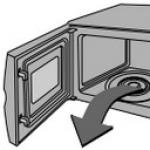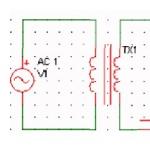Who: Trade House "Biblio-Globus" and MCP "PODIVM"


Where: Moscow, Moscow 101000, st. Myasnitskaya, 6/3, building 1
When: 15.11.17 (15:00)
Participants: management of Trade House "Biblio-Globus"; management of MCP “PODIVM”; representatives of the Moscow City Society of Collectors.
On November 2, 1967, the Orbita system began regular operation. This is a deep-space radio communication system created on the basis of the Molniya satellite for transmitting, receiving and subsequent retransmission of Central Television programs, as well as providing two-way telephone, telegraph and phototelegraph communications, covering the eastern regions of the USSR. On May 1, 1965, an experiment was conducted to rebroadcast Central Television (CT) programs via the Molniya-1 communications satellite to the Far East. For the most complete coverage of territories in the USSR, they began to build a giant collective receiving network "Orbita". And already in 1967 the first 20 stations were put into operation. Remote areas of the Far North, the Far East and Central Asia got the opportunity to watch the Central Television program, which was formed in Moscow, and four of its duplicates, depending on the time zones, were broadcast in the recording to the corresponding zone. By 1977, the number of ground stations had been increased to 73.
The history of the creation and development of domestic satellite communication and broadcasting systems
M.A. Bykhovsky, M.N. Diachkova
The idea of creating global satellite communication systems on Earth was put forward in 1945 by Arthur Clark, who later became a famous science fiction writer. The implementation of this idea became possible only 12 years after the appearance of ballistic missiles, with the help of which, on October 4, 1957, the first artificial Earth satellite (AES) was launched into orbit. To control the flight of the satellite, a small radio transmitter was placed on it - a beacon operating in the 27 MHz band. A few years later, on April 12, 1961, for the first time in the world, on the Soviet spacecraft Vostok, Yu. A. Gagarin made a historic flight around the Earth. At the same time, the astronaut had regular communication with the Earth by radio. Thus began the systematic work on the study and use of outer space for solving various peaceful problems.
The creation of space technology made possible the development of very efficient systems for long-range radio communication and broadcasting. In the United States, intensive work began on the creation of communication satellites. Such work began to unfold in our country. Its vast territory and the poor development of communications, especially in the sparsely populated eastern regions, where the creation of communication networks using other technical means (RRL, cable lines, etc.) is associated with high costs, made this new type of communication very promising.
At the origins of the creation of domestic satellite radio systems were outstanding domestic scientists and engineers who headed large scientific centers. Decisive importance was played by spacecraft and their carriers, created at the NPO Applied Mechanics, headed by Academician M.F. Reshetnev, a student of S.P. Korolev. Onboard repeaters for the first communication satellites were developed at the Moscow Scientific Research Institute of Radio Communications (MNIIRS) under the direction of M. R. Kaplanov. Satellite systems were created to solve various problems by specialists from a number of organizations.
The following describes the creation of domestic satellite radio communication systems for civil use and satellite broadcasting systems, in the development and implementation of which the specialists of the Scientific Research Institute of Radio (NIIR) played a key role.
At the initiative of the director of NIIR prof. A. D. Fortushenko, already in 1960, a special laboratory was created at the institute and a team of qualified specialists in the field of satellite communications began to form. N. I. Kalashnikov was appointed head of the laboratory. It included V. L. Bykov, O. S. Krapotin, E. G. Okhtyarkin, L. Ya. Kantor, M. Z. Zeitlin, V. M. Krylov, and a number of other employees. In 1965, on the basis of the laboratory dealing with satellite problems, under the leadership of N. I. Kalashnikov, a department of satellite communications and broadcasting was created. Soon, N. I. Kalashnikov moved to teaching at the Moscow Electrotechnical Institute of Communications (MEIS), becoming the head of the Department of Radio Communication Systems, and L. Ya. Kantor was appointed head of the department, who for more than 30 years headed this area of work at NIIR.
The main tasks of the department were to solve the problems associated with the creation in our country of civil satellite communications and broadcasting systems. These tasks were as follows:
- development of satellite repeaters for television broadcasting and communications (“Ekran”, “Rainbow”, “Hals”), since 1969 satellite repeaters have been developed in a separate laboratory headed by M. V. Brodsky;
- creation of system projects for the construction of satellite communications and broadcasting;
- development of equipment for earth stations (ES) of satellite communications: modulators, threshold-lowering demodulators of FM signals, receiving and transmitting devices, etc.;
- carrying out comprehensive work on equipping satellite communication and broadcasting stations with equipment;
- development of the theory of tracking FM demodulators with a reduced noise threshold, multiple access methods, modulation methods and noise-correcting coding;
- development of regulatory and technical documentation for channels, paths of television and communication equipment of satellite systems;
- development of control and monitoring systems for AP and satellite communications and broadcasting networks.
NIIR specialists created many national satellite communication and broadcasting systems that are still in operation. The receiving-transmitting ground and airborne equipment of these systems was also developed at NIIR. In addition to the equipment, the institute's specialists proposed methods for designing both the satellite systems themselves and the individual devices included in them. The experience of designing satellite communication systems of NIIR specialists is reflected in numerous scientific publications and monographs.
The first satellite communication and broadcasting lines through the Molniya-1 satellite
The first experiments on satellite communications by reflecting radio waves from the American reflecting satellite "Echo" and the Moon, used as passive repeaters, were carried out by NIIR specialists in 1964. Telegraph messages and a simple drawing from the English observatory were received by a radio telescope in the observatory in the village of Zimenki, Gorky Region " Jodrell Bank N. I. Kalashnikov, V. L. Bykov and L. Ya. Kantor participated in the experiments.
This experiment proved the possibility of successfully using space objects to organize communications on Earth.
Several system projects were prepared in the satellite communications laboratory, and then she took part in the development of the first domestic satellite communications system Molniya-1 in the frequency range below 1 GHz. The head organization for the creation of this system was the Moscow Research Institute of Radio Communications (MNIIRS). The chief designer of the Molniya-1 system is M. R. Kaplanov, deputy head of the MRIRS.
In the 1960s, NIIR was developing a transceiver complex for the Horizont tropospheric radio relay system, which also operates in the frequency range below 1 GHz. This complex was modified and the created equipment, called Horizon-K, was used to equip the first satellite communication line Molniya-1, which connected Moscow and Vladivostok. This line was intended for the transmission of a TV program or a group spectrum of 60 telephone channels. With the participation of NIIR specialists, two earth stations (ES) were equipped in these cities. MRIRS developed an onboard repeater for the first artificial communications satellite Molniya-1, which was successfully launched on April 23, 1965. It was launched into a highly elliptical orbit with an apogee of about 40 thousand km, a perigee of about 500 km and an orbital period of 12 h. Such an orbit was convenient for serving the territory of the USSR, located in northern latitudes, since for eight hours on each orbit of the satellite it was visible from anywhere in the country. In addition, launching into such an orbit from our territory is carried out with less energy than into a geostationary one. The orbit of the Molniya-1 satellite has retained its significance to this day and is used, despite the predominant development of geostationary satellites.
Through the space teleconference between Moscow and Vladivostok, television broadcasts were regularly broadcast and communication sessions were conducted, various scientific and experimental studies were carried out, methods and techniques for measuring the parameters and characteristics of the space communication segment were worked out.
The work on the creation of the first domestic satellite communication line was led by S. V. Borodich. The following specialists took an active part in the development: prof. N. I. Kalashnikov, prof. V. L. Bykov, L. Ya. Kantor, O. P. Krapotin (solution of systemic issues), M. Z. Zeitlin, Yu. M. Fomin (development of low noise amplifiers - LNA), V. P. Minashin (transmitting devices ), V. M. Tsirlin (development of TV sound channel equipment), etc.
The world's first satellite system "Orbita" for the distribution of TV programs
After the completion of research on the technical capabilities of the Molniya-1 satellite, NIIR specialists N.V. Talyzin and L.Ya. Kantor proposed to solve the problem of supplying TV programs from central television to the eastern regions of the country by creating the world's first satellite broadcasting system "Orbita" in in the 1 GHz band based on the Gorizont-K equipment. This proposal was approved, and by the decision of the government of the USSR, NIIR was determined to be the lead organization for the creation in the country of 3S equipment for satellite communication and broadcasting systems. The chief designer of this development, which is of great importance for the country, was appointed N. V. Talyzin - in those years, deputy director of NIIR, and his deputies - L. Ya. Kantor (for system issues and the receiving device) and M. Z. Zeitlin ( according to LSU). The successful implementation of this development was facilitated by the attention paid to it by the director of NIIR A. D. Fortushenko and his deputy V. A. Shamshin.
Typical earth station "Orbita"
In 1965-1967. in record time, in the eastern regions of our country, 20 earth stations "Orbita" and a new central transmitting station "Reserve" were simultaneously built and put into operation. The Orbita system has become the world's first circular, television, satellite distribution system, in which the possibilities of satellite communications are most effectively used.
When creating the Orbita system, much attention was paid to the choice of sites for the placement of earth stations. They tried to choose a place for the construction of the Orbita ZS as close as possible to television centers, and so that the influence of interference from tropospheric radio relay lines operating in the same frequency range was excluded. An important decision in the development of the system was the transition to the use of relatively small parabolic antennas, with a mirror diameter of 12 m, while at that time stations with huge and expensive antennas with a diameter of 25-32 m were built in the international Intelsat system.
Almost all the main departments of the institute took part in the work. The development of an antenna and an antenna-waveguide path, an antenna guidance and tracking system, receiving and transmitting devices, a low-noise parametric amplifier cooled by liquid nitrogen, a frequency converter amplifier, tracking demodulators of frequency-modulated (FM) signals, an audio transmission system, a system redundancy of equipment, systems for monitoring the parameters and characteristics of equipment, power supply systems.
The creation of the world's first satellite TV program distribution system "Orbita" was a significant technical achievement in the field of telecommunications and made it possible to provide central TV broadcasting to many large cities and remote areas of our country. The reception of TV programs in real time allowed the residents of these areas to feel themselves direct participants in the events taking place in the country. 20 million people living beyond the Urals got the opportunity to watch Central Television programs. The development leaders N. V. Talyzin, L. Ya. Kantor and M. Z. Zeitlin became laureates of the State Prize, many project participants were awarded orders and medals.
It should be noted that the range in which the new Orbita system operated 800-1000 MHz did not correspond to that which was allocated in accordance with the Radio Regulations for the fixed satellite service. Work on the transfer of the Orbita system to the C-band 6/4 GHz was carried out by NIIR specialists in the period 1970-1972. The station, operating in the new frequency range, was named Orbita-2. For it, a complete set of equipment was created for operation in the international frequency range - in the Earth-Space section - in the 6 GHz band, in the Space-Earth section - in the 4 GHz band. The same parabolic mirrors with a diameter of 12 m were used as an antenna on the AP, but a receiving-transmitting horn feed with a polarization selector and broadband waveguide paths, separate for receiving and transmitting, were developed for them. This made it possible to transfer these stations in the future to duplex operation. Under the leadership of V. M. Tsirlin, a system for pointing and auto-tracking antennas with a software device was developed. This system used an extremal automaton and a conical scan method.
In connection with the introduction of multi-barrel satellite transponders, a receiving device was developed for large stations of the Azimuth type, initially to receive signals from three trunks (in accordance with the capabilities of the new Molniya-3 satellite), and later six trunks (through the geostationary satellite " Rainbow"). At the input of the receiving device, a broadband, low-noise, liquid nitrogen-cooled parametric amplifier, common to all trunks, was used, after the amplifier, letter converters were switched on for the number of trunks required for a given station. The stems were separated using circulators and bandpass filters. The required bandwidth was formed in the IF path at the input of a special demodulator and was 34 MHz, the frequency deviation during the transmission of image signals was chosen to be +15 MHz. The transmission of sound accompaniment, as in the Orbita system, was carried out by the method of temporary compression of the video signal by sound signals. Later, in the Orbita-2 system, channels on subcarriers were organized to transmit the TV sound program and sound broadcasting. A 100% redundancy of equipment and a system for monitoring the main parameters and characteristics of stations were envisaged.
For the central station of the ZS, the transmitter "Gradient-K" was developed, initially for three, and then for six trunks. To ensure the operation of transmitters to one antenna, various bridge waveguide power summation schemes were used. The Orbita-2 stations began to be introduced in 1972, and by the end of 1986, about 100 of them had been built. Many of them are still operating receiving and transmitting stations.
Along with NIIR, many other organizations took an active part in the creation of the Orbita system: the Special Design Bureau of the Moscow Power Engineering Institute (OKB MEI) - the development of the ZS antenna, the Moscow Radio Engineering Plant (MRTZ), the State Design Institute of Radio and Television (GSPI RTV) - design construction of buildings for the AP, factories of industrial ministries (equipment manufacturing).
Basically, the same specialists participated in the creation of the Orbita and Orbita-2 systems. The development of AP antennas and elements of the antenna-feeder path was led by A. M. Pokras and A . M. Model, work on the creation of a system for transmitting sound by the method of time division of a video signal and pointing antennas - V. M. Tsirlin, employees of NIIR V. M. Krylov, B . C. Sanin, E. V. Miroshnikov, V. V. Loginov, A. B. Nalbandyan, K. I. Mustafidi, B . C. Akimov, V. N. Bogatyrev, V. G. Petukhov, E. I. Kumysh and others performed a significant amount of work on putting the receiving AWS into operation. All work on the creation of a central transmitting AP was headed by NIIR Deputy Director V.P. Minashin and V.M. Shifrina.
Later, for the operation of the Orbita-2 network, the first Soviet geostationary satellite Raduga was created and launched into orbit, the multi-barrel onboard repeater of which was created at NIIR (the work leader A. D. Fortushenko and its participants M. V. Brodsky, A. I. Ostrovsky, Yu. M. Fomin, etc.) At the same time, manufacturing technology and methods for ground processing of space products were created and mastered.
For the Orbita-2 system, new Gradient transmitters were developed (I. E. Mach, M. Z. Zeitlin, and others), as well as parametric amplifiers (A. V. Sokolov, E. L. Ratbil, V S. Sanin, V. M. Krylov) and devices for receiving signals (V. I. Dyachkov, V. M. Dorofeev, Yu. A. Afanasiev, V. A. Polukhin, etc.).
The world's first direct TV broadcasting system "Ekran"

Ekran system service area
The widespread development of the Orbita system as a means of delivering TV programs became economically unjustified in the late 1970s due to the high cost of the AP, which makes it inexpedient to install it in a point with a population of less than 100-200 thousand people. The Ekran system turned out to be more effective, operating in the frequency range below 1 GHz and having a high transmitter power of the onboard repeater. The purpose of creating this system was to cover sparsely populated areas in Siberia, the Far North and part of the Far East with TV broadcasting. For its implementation, frequencies of 714 and 754 MHz were allocated, at which it was possible to create fairly simple and cheap receiving devices. The Ekran system became in fact the world's first direct satellite broadcasting system.
 professional receptionist
professional receptionist
device "Screen - PP"
Initially, it was planned to create a system in which the TV signal would be radiated to the Earth in the same format that is adopted for the terrestrial TV broadcast network, using single-sideband modulation. However, at the same time, a transmitter with a power of several kilowatts was required on board the satellite, which made it impossible to satisfy the limitation of the Radio Regulations on the power flux density generated in the territory of states adjacent to our country. V. A. Shamshin proposed to use FM when creating the Ekran system for transmitting signals from a satellite. This proposal made it possible to reduce the transmitter power by almost an order of magnitude and comply with the ITU Recommendations on the power flux density generated by it near the Earth's surface.
For the Ekran satellite, an onboard repeater was developed and manufactured, which at that time had a record power of up to 300 watts. In the Ekran system, in addition to the signals of one TV program, it was possible to transmit one radio program.
The reception facilities of this system had to be cost-effective both for servicing small communities and for individual reception of TV programs. Receiving devices of classes I and II were developed. The former were supposed to be used to feed TV programs to local television centers and powerful terrestrial repeaters. The latter were designed to feed a TV signal to low-power repeaters (usually included in a class II receiver) or to a cable network. They consisted of a simple receiver and a device for converting FM signals to AM and transferring it to the meter band channels. The first ones were equipped with a "wave channel" type antenna, consisting of 16-32 canvases, the second - with an antenna of four canvases.
 Antenna for professional receiver "Ekran - PP"
Antenna for professional receiver "Ekran - PP"
The first satellite of the Ekran system was launched on October 26, 1976 into geostationary orbit at 99°E. e. A little later in Krasnoyarsk, collective reception stations "Ekran-KR-1" and "Ekran-KR-10" were produced with an output television transmitter power of 1 and 10 watts. The earth station transmitting signals to the Ekran satellite had an antenna with a mirror diameter of 12 m; it was equipped with a 5 kW Gradient transmitter operating in the 6 GHz band. The receiving units of this system, developed by NIIR specialists, were the simplest and cheapest receiving stations of all those implemented in those years. By the end of 1987, the number of installed Ekran stations reached 4,500.
The Ekran system is still in operation. Since it operates in the frequency band allocated by the Radio Regulations for terrestrial TV broadcasting, and it must comply with the rules for power emission in the territory of other states, its service area is limited to the territory of Western and Eastern Siberia.
The creation of the Orbita and Ekran systems made it possible to provide the entire Asian part of the country with central TV and ZV broadcasting. The supervisors of the work were A. D. Fortushenko, V. A. Shamshin, V. L. Bykov, L. Ya. Kantor, I. S. Tsirlin, Yu. M. Fomin, M. V. Brodsky, the main performers were V. D. Kuznetsov, A. S. Ostrovsky, A. V. Sokolov, V. I. Dyachkov, E. I. Kumysh and others. The contribution to the creation of the Ekran system by V. A. Shamshin and I. S. Tsirlin was noted Lenin Prize.
TV distribution systems - programs "Moscow" and "Moscow - Global"
Further progress in the development of satellite TV broadcasting systems in our country is associated with the creation of the Moscow system, in which the technically obsolete ES of the Orbita system, which had large antennas and high power consumption, were replaced by small ES. The development of small APs began in 1974 on the initiative of N. V. Talyzin and L. Ya. Kantor.
For the Moskva system on the Gorizont satellite, an increased power trunk was provided, operating in the 4 GHz band to a narrowly directed antenna. The energy ratios in the system were chosen in such a way that they ensured the use of a small parabolic antenna with a mirror diameter of 2.5 m without automatic guidance on the receiving ES. The principal feature of the "Moskva" system was the strict observance of the norms for the spectral power flux density near the Earth's surface, established by the Radio Regulations for fixed service systems. This made it possible to use this system for TV broadcasting throughout the USSR. The system provided high quality reception of the central TV program and the radio program. Subsequently, another channel was created in the system, designed to transmit newspaper pages. The "Moskva" system began work in 1979 through a satellite located at a position of 14 ° W. and then the satellites were introduced into the system at positions 53° E. d., 80° E d., 90° E d., 140° E e. Through these satellites, blocks of the central TV program were transmitted, as well as the Mayak radio broadcasting program, shifted in time for the corresponding time zones of our country. Due to their simplicity and small size, the Moscow AP systems have become widespread. About 10 thousand APs of various modifications were produced.
The development of the system was carried out in close collaboration with industrial enterprises. The stations were constantly improved, their reliability increased, and the cost decreased. The station included TV repeaters of various capacities for different frequency television channels.
These stations have also become widespread in domestic institutions located abroad (in Europe, northern Africa and a number of other territories), which made it possible for our citizens abroad to receive domestic programs. When creating the "Moskva" system, a number of inventions and original solutions were used (a device that introduces nonlinear pre-emphasis to improve the noise immunity of TV signal reception, uncooled parametric amplifiers and transistor low-noise amplifiers, controlled companders in the sound channel, etc.), which made it possible to improve both the construction of the system itself systems (working with antennas of 2.5 m and without guidance), and its hardware systems. This system served as a prototype for many satellite systems later developed in the USA and Western Europe, which used medium-power satellites operating in the fixed-satellite service band to provide TV programs to small-sized and moderate-cost ESs.
The Moskva system is still in operation. By the end of 2005, it organized a transmission in one trunk in digital form in a package of several TV programs. It is used as a distribution system for all-Russian, regional and commercial broadcast programs and provides reception of all-Russian programs with a time shift in the corresponding broadcast areas. To do this, the APs are retrofitted in order to receive several TV programs, which are then broadcast in analog form to terrestrial TV transmitters.
During 1986-1988. A special system "Moscow-Global" with small APs was developed, designed to supply central TV programs to domestic representative offices abroad, as well as to transmit a small amount of discrete information. This system is also in operation. It provides for the organization of one TV channel, three channels for the transmission of discrete information at a speed of 4800 bps and two channels at a speed of 2400 bps. Discrete information transmission channels were used in the interests of the Committee on Television and Radio Broadcasting, TASS and APN. The system worked through the trunk of the Gorizont satellite of increased power, the same as in the Moskva system, but connected to a global antenna. To cover almost the entire territory of the globe, it uses two satellites located in geostationary orbit at 11 ° W. d. and 96 ° in. e. Receiving stations have a mirror with a diameter of 4 m, the equipment can be located both in a special container and indoors. The development of low-noise input amplifiers for the receiving device of the station was carried out in close cooperation with enterprises of the Ministry of Electronic Industry of the USSR.
Yu. B. Zubarev, L. Ya. Kantor and V. G. Yampolsky were the leaders in the development of the Moscow-Global system. The work on the design of the equipment was led by A. I. Bobrov, system issues were solved by B. A. Lokshin and E. A. Zlotnikova, the guidance system was developed by V. M. Tsirlin, V. P. Shulga and G. N. Kudeyarov, the development of transmission equipment sound programs were directed by E. Ya. Chekhovsky, the creation of modems was led by V. M. Dorofeev, antenna systems were developed by G. G. Tsurikov.
Satellite TV system - broadcasting in the 12 GHz band
Since 1976, NIIR began work on creating a fundamentally new satellite television system in those years in the 12 GHz (STV-12) frequency band allocated according to the international plan for such satellite TV broadcasting, which would not have restrictions on the radiated power inherent in systems "Ekran" and "Moskva" and could provide coverage of the entire territory of our country with multi-program TV broadcasting, as well as the exchange of programs and the solution of the problem of republican broadcasting. In the creation of this system, NIIR was the lead organization.
The specialists of the institute conducted studies that determined the optimal parameters of this system and developed multi-barrel airborne repeaters and equipment for transmitting and receiving APs. At the first stage of development of this system, the domestic satellite "Hals" was used, the signals were transmitted in analog form, and imported receiving equipment was used. Later, a transition was made to digital equipment based on a foreign satellite, as well as transmitting and receiving equipment.
Creation of the Intersputnik system
In 1967, the development of international cooperation between the socialist countries in the field of satellite communications began. Its goal was to create an international satellite system "Intersputnik", designed to meet the needs of Bulgaria, Hungary, Germany, Mongolia, Poland, Romania, the USSR and Czechoslovakia in telephone communications, data transmission and the exchange of TV programs. In 1969, a preliminary design of this system, the legal foundations of the Intersputnik organization were developed, and in 1971 an agreement was signed on its creation.
The Intersputnik system became the second international satellite communication system in the world (after the Intelsat system). NIIR specialists developed AP projects, which were built with the assistance of the USSR in many countries of the socialist community. The first AP abroad was created in Cuba, and the second - in Czechoslovakia. In total, NIIR delivered more than ten APs abroad to receive TV, AP and special-purpose programs.
Initially, Intersputnik used satellites of the Molniya-3 type in a highly elliptical orbit, and since 1978, two multi-barrel geostationary satellites of the Gorizont type with standing points of 14° W. d. and 53 ° (and then 80 °) in. e. Initially, the transmitter "Gradient-K" and the receiving complex "Orbita-2" were installed on the ZS. Later, the Helikon transmitters with a power of 3 kW and the Shirota receivers developed at NIIR began to be used, and the Elektronika 4/60 amplifiers were used as LNAs. The channel-forming equipment "Gradient-N" was installed, developed in Kiev by specialists under the guidance of L. G. Gasanov (type OKN, with FM for each carrier with an analog signal), and later they began to use more advanced equipment MDVU-40 and "Interchat" (developed jointly with the Hungarian TKI Institute). The main developers of this equipment at NIIR were the Institute's leading scientists in the field of digital communication systems V. M. Tsirlin, V. M. Dorofeev and G. Kh. Pankov. A regulation was drawn up that determined the technical requirements for the AP, the relationship between the technical services, the directorate and the services of the communications administrations.
All system and technical solutions for the creation of the Intersputnik system, as well as the AP equipment, were created by NIIR specialists together with the NIIR pilot plant Promsvyazradio and co-executing organizations. The Intersputnik system is still in operation today, leasing the trunks of the Russian space constellation, as well as using its geostationary satellite LMI -1, located at a position of 75 ° E. e. The work was carried out in cooperation with the Iskra Production Association (Krasnoyarsk), the Moscow and Podolsk Radio Engineering Plants. The head of the work was S. V. Borodich.
Creation of a satellite link for government communications
In 1972, an intergovernmental agreement was concluded between the USSR and the USA on the creation of a direct line of government communications (LPS) between the heads of state in case of emergency. The implementation of this important government agreement was entrusted to NIIR specialists. V. L. Bykov became the chief designer of the LPS development, and I. A. Yastrebtsov and A. N. Vorobyov became the responsible executors.

Earth station of the Intersputnik system in Cuba
Two APs were created on the territory of the USSR: one (in Dubna near Moscow) with an antenna with a diameter of 12 m for organizing an LPS channel through the Soviet Molniya-3 satellites, the second (in Zolochev near Lvov) with an antenna of 25 m - for working through satellites " Intelsat IVa” of the international company “Intelsat”. The commissioning of the LPS took place in 1975. It operates through the Dubna AP to this day. This was the first experience of creating a satellite line in the international system "Intelsat" by domestic specialists.
In 1960-1980. NIIR specialists solved very important for our state and technically complex problems of creating national satellite communication and broadcasting systems. Systems were created for the distribution of TV programs over the vast territory of our country, including direct satellite television broadcasting. Many systems created at NIIR were the first in the world: Orbita, Ekran, Moskva, etc. The equipment of the ground part of these systems, as well as on-board equipment, was also developed by NIIR, it was produced by the domestic industry.
Satellite communication and broadcasting systems made it possible to meet the needs of tens of millions of citizens of our country, especially those who lived in sparsely populated areas of Western Siberia and the Far East. With the creation of satellite systems in these regions, for the first time, citizens have the opportunity to receive central television programs in real time. With the help of satellite systems, the problems of prompt transmission of central newspapers to these regions, their timely release and delivery to the population were solved. The introduction of satellite systems was extremely important for the economic and social development of both hard-to-reach regions of Siberia and the Far East, and the entire country.
Satellite systems have played a big role in the development of the public communication network, which unites the European and Eastern parts of our state. The first backbone and zonal satellite communication lines were built on the basis of equipment developed by NIIR specialists. The population of Sakhalin, Kamchatka, Khabarovsk Territory and many other remote territories received access to the public telephone network. Satellite communications and broadcasting in our country have been developing for many years in accordance with the concept developed by NIIR scientists and approved by the government.
NIIR scientists have carried out original scientific research aimed at creating methods for calculating various kinds of devices used in satellite communication systems. They also created a methodology for designing satellite communication systems and wrote a number of fundamental monographs and scientific articles on satellite communication problems.
For the creation of domestic systems of satellite communications and television and radio broadcasting, many specialists of the institute received awards: N. V. Talyzin, L. Ya. Kantor and M. Z. Zeitlin, the leaders in the development of the world's first satellite system for distributing TV programs "Orbita", became laureates of the State Prize; S. V. Borodich, I. E. Mach, A. I. Tsukublin were awarded the same prize for the creation of measuring complexes for satellite communication systems on ships of the Academy of Sciences, I. S. Tsirlin and V. A. Shamshin, for the creation of new radiating systems for broadcasting - V. L. Bykov, M. I. Krivosheev, S. S. Shlyuger, for the creation of new radio devices for RRL, TRRL and satellite systems - A. V Sokolov and V. M. Tsirlin.
Literature
- Kantor L. Ya. Results and trends in the development of satellite communications and broadcasting in Russia// Proceedings of NIIR. –1999.
- Kantor L. Ya. From the history of NIIR and mine// Proceedings of NIIR, 2005.
- Sokolov A.V. The first radio relay, the first tropospheric and the first satellite communication line. How it was? How did it start?// Proceedings of NIIR, 1999.
- 110 years of radio (collection of articles)// Ed. Yu. V. Gulyaev and M. A. Bykhovsky. –M.: Radio engineering, 2005.
Story
Television system "Orbita"
The Orbita system began regular operation on November 2, 1967, when the TV center in Ostankino was opened. The broadcasts were intended for the Far North, Siberia, the Far East and Central Asia. In 1971, a double of the first program was transmitted to the Urals, Central Asia and part of Kazakhstan - the Vostok program, taking into account standard time. Since January 1, 1976, Ostankino has been broadcasting on eight channels: in addition to the four main programs, four more takes of the First Program are transmitted via the Orbita satellite system specifically for the eastern territories of the USSR with a time shift of +2, +4, +6 and +8 hours. So, the first issue of the Vremya program on the Orbita-1 system went on the air at 12:30 Moscow time. The Ekran satellite system, launched on October 26, 1976, makes it possible to receive DH transmissions on collective-use receivers in settlements in Siberia and the Far North. Since January 1, 1977, all DH programs have been broadcast in color.
On January 1, 1982, the CT rescheduled its programs: the evening Fourth became the Second Program, the all-Union status of which was provided by four doubles for the eastern territories. She began work at 8:00 and after a day break she resumed broadcasting at 18:00 with the release of Novosti.
Current network status
Currently, Channel One, using the Orbita system, broadcasts to five zones (orbits are also indicated during prevention):
- Zone A - Kamchatka, Chukotka, Magadan, Sakhalin ("Orbita-1", time zones +7, +8);
- Zone B - Far East, Eastern Siberia ("Orbita-2", time zones +6, +7);
- Zone B - Central Siberia ("Orbita-3", time zones +3, +4);
- Zone G - Western Siberia ("Orbit-4", time zones +2, +3);
- Zone D - Central Russia ("Orbit-5", time zones -1, 0).
On February 1, 2007, the NTV channel launched, as stated on the website, “ the fifth orbit - especially for the inhabitants of Siberia» . Viewers of Novosibirsk, Barnaul, Tomsk, Omsk and some other Siberian cities can now watch the channel's programs at the same time as Muscovites.
Links
- Forty years ago, Soviet designers invented the first Orbita television system.
Notes
Wikimedia Foundation. 2010 .
- orbifold
- orbital aircraft
See what "Orbita (TV network)" is in other dictionaries:
Orbit (disambiguation)- Orbit is an ambiguous term: Orbit is the path of a celestial body in the gravitational field of another body; Orbit is a synonym for the eye socket; Orbita municipality in Spain; Orbit satellite television network covering the eastern regions ... ... Wikipedia
ORBIT- a satellite communications system developed in the USSR (in operation since 1965). Includes a network of ground stations and artificial Earth satellites Lightning, Rainbow, Horizon ... Big Encyclopedic Dictionary
ORBIT (satellite communication system)- "ORBIT", a satellite communication system developed in the USSR (operating since 1965). Includes a network of ground stations and artificial earth satellites "Lightning", "Rainbow", "Horizon" ... encyclopedic Dictionary
Burial orbit- A disposal orbit is an orbit whose altitude is 200 kilometers higher than that of the geostationary orbit. Spent orbital vehicles are sent to the disposal orbit to reduce the likelihood of collisions and free up space on ... ... Wikipedia
Moon orbit- The orbit of the Moon is the trajectory along which the Moon revolves around the center of mass common with the Earth, located approximately 4700 km from the center of the Earth. Each rotation takes 27.3 Earth days and is called a sidereal month. On average, the Moon is removed from ... Wikipedia
"ORBIT"- the name of the owls of the satellite communication system. Communication satellites Molniya 1 have been used in the system since 1965, satellites Molniya 3 since 1974 (in 1971 1977 satellites Molniya 2 also operated). The system includes transmitting and receiving earth stations (see Fig.). The first 20 stations ... ... Large encyclopedic polytechnic dictionary - Stylized image of the interplanetary transport network. The green stripe is one of many possible paths located on the surface of the light green pipe. Places where the green polo ... Wikipedia
0 👁 719

On November 29, 1967, the Orbita satellite communications system was created using Molniya-1 to connect Moscow with Vladivostok.
We rarely think about how the movement in near-Earth space is organized. For example, about the fact that from to the space station is within easy reach, less than from Moscow to St. Petersburg, and the signal received by the satellite dish has traveled a greater distance than the average car travels in five years. In addition, each launch is preceded by careful design, according to which the device will move in outer space.
Orbits we choose
When in 1961 the specialists of the Royal Design Bureau-1 began to create the first Soviet communications satellite Molniya-1 for the Orbita television system, they faced the problem of choosing a target orbit for their offspring. The most effective, at first glance, seemed to be a height of 36 thousand kilometers. Being on it around the clock stays in line of sight for about 1/3 of the Earth's surface. However, from such an orbit it is impossible to provide communication at high latitudes and television broadcasting in the regions of the Far North. In addition, the Soviet Union did not have at that time carriers for launching heavy satellites into geostationary orbit.
A solution was found by ballistics, who came up with an orbit into which a communications satellite could be launched, which was already in development. It was a highly elongated orbit with a minimum altitude (perigee) of 500 kilometers and a maximum (apogee) of 40,000 kilometers. The orbital period was 12 hours, and in accordance with the laws of celestial mechanics, the satellite spent most of the time in the apogee region. The inclination of the orbit (63.4°) was chosen so that during this period the satellite was visible from most of the territory of the USSR. Favorable conditions for communication lasted eight hours, after which the satellite left for the other side of the Earth, and on the next orbit, the apogee passed over North America. Again, it became available for television rebroadcasting only after 16 hours.
The Molniya-1 communications satellite was successfully launched into this orbit on the third attempt on April 23, 1965, and the very next day the first space communication session between Moscow and Vladivostok took place in the Soviet Union. For round-the-clock television broadcasting, it was necessary to keep three Molniya satellites in space at the same time, and build complex antennas on Earth. Large parabolic "mirrors" tracked the intricate trajectory of the satellite in the sky: it quickly ascended in the west, rose to the zenith, passed through it, then began to move in the opposite direction, turned around again and, accelerating, descended to the eastern horizon. Another complicating factor was the significant changes in speed during the movement in an elongated orbit, as a result of which, due to the Doppler effect, the frequency of the signal received on Earth constantly changed.
The trajectory chosen for the first Soviet communications satellite was later called the Molniya orbit. Its development with the advent of more powerful rockets was the highly elliptical Tundra orbit with a perigee of 500 kilometers, an apogee of 71,000 and an orbital period of 24 hours. Orbits with such a period are called geosynchronous, because, moving along them, the spacecraft always passes apogee over the same region of the Earth. The efficiency of using satellites in the Tundra orbit is significantly increased, since they can serve the selected territory for more than 12 hours on each orbit, and two satellites are enough to organize round-the-clock communication. However, ground equipment is still complex, because geosynchronous satellites are constantly changing their position in the sky, and they have to be monitored.
hovering in the sky
The receiving equipment is drastically simplified if the satellite remains stationary relative to the Earth. Of the entire set of geosynchronous orbits, this is achieved only on one circular orbit located strictly above the equator (inclination 0°). This orbit is called geostationary, because in it the satellite seems to hover over the chosen point on the equator at an altitude of 35,786 kilometers.
The Americans were the first to launch a geostationary satellite, but they did not succeed immediately. The first two attempts in 1963 ended in failure, and only on September 10, 1964, the Sinkom-3 satellite entered the GSO. Interestingly, he launched into space on August 19, and for almost a month, using his own engine, he sneaked up to the point of standing chosen for him. The first domestic geostationary satellite Raduga-1 was launched only on December 22, 1975. Since then, the GSO has been constantly replenished, and today there are more than 400 satellites on it and another 600 vehicles moving near it.
Strictly speaking, due to various perturbations and inference errors, the geostationary satellite does not “hang” completely motionless over the equator, but oscillates about its standing point. When projected onto the earth's surface, its trajectory resembles a small figure eight. In addition, due to gravitational perturbations, the device can "drift" along the orbit. In order to stay at the chosen point of standing and not leave the alignment of ground-based antennas, the device must regularly correct its orbit. To do this, there is a supply of fuel on board. It is from him that the service life of a geostationary satellite sometimes depends.
Simple geometric constructions show that at latitudes above 81 ° geostationary satellites are below the horizon, which means that communication with their help in the polar regions is impossible. In practice, mobile communication via a geostationary satellite is limited to latitude 65-70°, and fixed - 70-75°. Communication via the GSO has another serious drawback. On the way to the satellite and back, the radio signal travels more than 70 thousand kilometers, spending a quarter of a second on it. Taking into account the time for processing the signal and its transmission over terrestrial communication lines, the delay can significantly exceed half a second. As a result, Internet services via satellite respond slowly, and telephone communication becomes uncomfortable, since even modern means of “echo cancellation” do not always cope with large delays. To get rid of these shortcomings, it is necessary to reduce the height of the satellites.
Orbital elements
The word "orbit" in Latin means "track" or "path". The near-Earth orbit is characterized by a number of parameters: the lowest and highest heights (perigee and apogee, which also determine the period of revolution), inclination (the angle between the plane of the orbit and the plane of the earth's equator), the longitude of the ascending node, which specifies "in which direction" (around which line in equatorial plane) the orbit is tilted, and the perigee argument indicating how the elliptical orbit is rotated in its own plane. Gravitational disturbances from other planets, the pressure of solar radiation, the non-spherical shape of the Earth, its magnetic field and atmosphere lead to the fact that the orbits of satellites can change noticeably in time. Therefore, during the operation of the satellite, trajectory measurements are regularly carried out, and, if necessary, its orbit is corrected.
Constellation Iridium
In relatively low orbits, commercial and government communications satellite systems are being formed. Technically, these trajectories cannot be called convenient for communication, since satellites on them are visible low above the horizon most of the time, which negatively affects the quality of reception, and in mountainous terrain it can make it impossible. Therefore, the lower the orbit, the more satellites should be in the system. If three satellites are sufficient for a global communication system in the GEO, then in orbits of medium height (5000-15000 kilometers), from 8 to 12 spacecraft are already required. And for altitudes of 500-2000 kilometers, more than fifty satellites are needed.
And yet, by the end of the 1980s, the prerequisites for the implementation of low-orbit communication systems had developed. Firstly, the satellites were getting closer and closer to the GSO. "Parking spaces" in this orbit are subject to international registration, and neighboring satellites must not operate on the same radio frequencies, so as not to interfere with each other. Secondly, progress in the field of radio electronics has made it possible to create inexpensive (and, most importantly, light) satellites with fairly broad capabilities. A rocket capable of launching just one large communications satellite into the GEO could throw a whole "pack" of such devices into low orbit. Third, the end of the Cold War and the disarmament process released hundreds of intercontinental ballistic missiles that could, at bargain prices, be used to launch small satellites. And finally, it was during these years that the demand for mobile communications began to grow rapidly, which is characterized by the use of low-power omnidirectional antennas that “do not reach” the GSO. All these factors made launching even a very large number of low-cost low-orbit satellites more profitable than creating a constellation of several heavy geostationary vehicles.
Among the first low-orbit communication systems were Orbcomm (USA) and "Gonets" (Russia). They did not provide voice transmission, but were intended to send text messages and collect information from various sensors, such as meteorological ones. Today Orbcomm includes 29 satellites weighing 42 kilograms in orbits 775 kilometers high. The "Gonets" system initially contained only 6 satellites, due to which the delivery time of messages could be delayed by several hours. Now the third generation of satellites is being replaced in it, the number of operating devices has reached nine, but in the future it should be increased to 45 - nine each in five almost polar orbits (an inclination of 82.5 °) with a height of 1500 kilometers.
Polar orbits are called orbits that pass over the North and South Poles of the Earth, that is, they are located perpendicular to the equator. Any part of the earth's surface periodically falls into the field of view of a satellite in a polar orbit. If several such orbits are used, rotated at an angle to each other, and several satellites are launched at equal intervals in each, it is possible to continuously survey the entire surface of the Earth. This is how the Iridium satellite telephony network works. It uses polar orbits with an inclination of 86.4° and an altitude of 780 kilometers. Initially, they housed 77 satellites, hence the name of the system: iridium - the 77th element of the Periodic Table of Mendeleev. However, nine months after launch, in November 1998, Iridium went bankrupt. The price of a call, up to seven dollars a minute, proved too high for consumers, in part because the Iridium system provided truly global communications from pole to pole. The GlobalStar system, which launched a little later, for the sake of economy, uses instead of polar orbits with an inclination of 52 °, which limits communication to the 70th parallel (approximately at the latitude of Yamal). But 48 satellites are enough for work (plus four spare ones), and the cost of communication in the same 1999 was no more than two dollars per minute.
Iridium satellites were about to be deorbited and burned in the dense layers of the atmosphere when the entire system was bought by the US Department of Defense. To this day, Iridium remains the only satellite communications system that provides uninterrupted telephone communications around the globe. For example, since 2006, it has provided a permanent connection to the Internet at the Amundsen-Scott polar station at the South Pole. The connection speed is 28.8 kilobits per second, like on an old telephone modem.
Use of near-Earth space
In the first approximation, satellite orbits are divided into low (up to 2000 kilometers from the Earth), medium (below geostationary orbit) and high. Manned flights are made no higher than 600 kilometers, since spaceships should not enter the radiation belts surrounding our planet. The energetic protons of the interior pose a danger to the life of astronauts. The maximum radiation intensity is reached at an altitude of about 3000 kilometers, which is avoided by all spacecraft. The external electronic belt is not so dangerous. Its maximum lies somewhere between the zones of navigation and geostationary satellites. Satellites operating in highly elongated elliptical orbits usually rise even higher. These are, for example, the X-ray observatory (USA), which, in order to avoid interference, observes far from the radiation belts, and the future Russian observatory Radioastron, whose data are the more accurate, the greater the distance from those working with it in a pair of terrestrial ones. The highest near-Earth orbits, which can equally be considered circumsolar, lie at an altitude of 1.5 million kilometers near the so-called.
Together with the Sun
Close to polar is another important class of orbits called , which always have a constant orientation relative to . At first glance, it seems that this contradicts the laws of celestial mechanics, according to which the plane of the orbit remains constant, which means that during the movement of the Earth around the Sun, it must turn to it first one side, then the other. But if we take into account that the Earth has a flattened shape, then it turns out that the plane of the orbit experiences precession, that is, it rotates slightly from turn to turn. By choosing the right height and inclination, you can ensure that the rotation of the orbital plane just corresponds to the arc traversed by the Earth around the Sun. For example, for an orbital altitude of 200 kilometers, the inclination should be slightly more than 96 degrees, and for 1000 kilometers it should be more than 99 degrees (figures of more than 90 degrees correspond to orbital movement against the daily rotation of the Earth).
The value of the SSO lies in the fact that, moving along it, the satellite flies over terrestrial objects always at the same time of day, which is important for space photography. In addition, due to the proximity of the SSO to polar orbits, it is possible to monitor the entire earth's surface from them, which is important for meteorological, mapping and reconnaissance satellites, which are collectively called Earth remote sensing satellites (ERS). A certain choice of SSO parameters allows the satellite to never go into the Earth's shadow, always remaining in the sun near the border of day and night. At the same time, the satellite does not experience temperature drops, and solar panels continuously provide it with energy. Such orbits are convenient for radar mapping of the earth's surface.


















